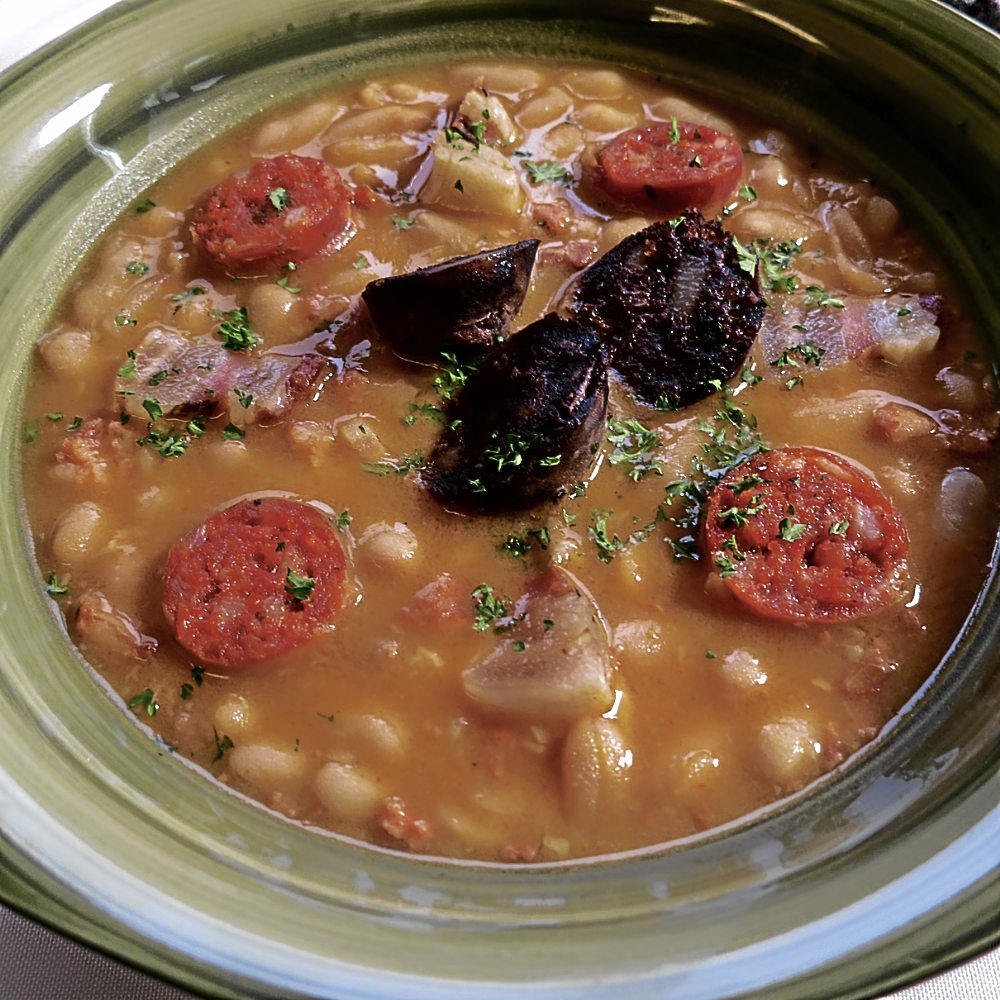
After I was able to cook Señor Anastacio de Alba’s recipe for croquetas de bacalao (see Inquirer Lifestyle, March 28), I felt challenged to try his recipe for fabada, which his son Miguel Angel demonstrated at the Maya Kitchen Culinary Center a few weeks ago. Challenge is the word because it takes a lot of time and patience to cook this Spanish bean stew. Shopping for ingredients alone could be time consuming, considering the recipe requires an assortment of Spanish meats. Luckily they’re all available in Alba’s restaurants, which make these Spanish sausages.
Though often associated with the Asturias region, fabada is cooked and served in other regions of Spain, as well as in Spanish restaurants all over the world. It’s popular in the Philippines, too, being one of the dishes Filipinos learned from the Spanish colonizers.
This recipe of Anastacio de Alba is very rich and flavorful. Slowly cooked and rustic, it’s comfort food at its best. Serve it with a thick, crusty bread to make a complete meal.
Alba’s restaurants: 38 Polaris St., Bel-Air, Makati (tel. 8966950; Tomas Morato cor. Scout Lozano, Quezon City (tel. 9251912); Westgate, Alabang
Fabada Asturiana
Makes 5-6 servings
- 500 g uncooked white beans
- Water, for soaking the beans
- Few strands of saffron
- 200 g ham hock or ham bone (may use Majestic ham bone)
- 60 g thick-slice jamon Serrano
- 200 g bacon slab
- 300 g whole chorizo de Bilbao
- 200 g morcillas (Spanish blood sausage)
- ½ tsp whole paprika picante
- 2 tbsp olive oil
- 1 medium onion, thinly sliced
- 4 cloves garlic, mashed
- 2 bay leaves
- 2 sprigs fresh thyme (or ½ tsp dried thyme)
In a large bowl, soak the beans in enough cold water to cover for not more than 8 hours. Drain the beans then transfer them to a wide shallow cooking pan. Pour in enough water to cover the beans with an inch of water over all. Bring the beans to a slow boil over medium heat, skimming off any foam that rises to the surface.
Stir in saffron, ham hock, jamon Serrano and bacon slab, making room for them at the bottom of the pan. Cover the pan and cook for 5 minutes.
Skim off any foam, add the chorizo, morcillas, paprika, olive oil, onion, garlic, bay leaves and thyme. Let boil for another 5 minutes.
Lower the heat to a simmer. Check to be sure there’s ½ inch of liquid over the beans. If liquid becomes less, add more water.
Cover the pan and cook the fabada slowly for 1 to 2 hours, or until the beans become tender but not mushy. Make sure there’s always ½ inch of liquid over the beans. Stir mixture occasionally so beans don’t stick to the bottom of the pan. Taste the beans and, if needed, season to taste with salt and pepper.
Ladle the beans into a serving bowl. Transfer the sausages to a plate and slice them diagonally. Serve the sausages with the beans.
For more tips, recipes and stories, visit author’s blog www.
normachikiamco.com and Facebook fan page www.facebook.
com/normachikiamco. Follow on Twitter @NormaChikiamco
Cook’s tips:
Do not soak the beans too long or they will become mushy.
Chef Miguel recommends adding the meats to the beans (the chorizo, bacon, jamon Serrano and morcillas) whole (not sliced). That way they will be better able to retain their flavor.
If the cooked dish seems too thin (malabnaw), remove five to six beans from the stew and mash them with a little of the cooking liquid. Then stir the mashed beans into the stew. Bring the dish to a simmer and cook until the mashed beans are incorporated and the liquid has thickened.
If you can’t find paprika picante, you can use any other kind of paprika.









































